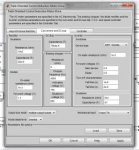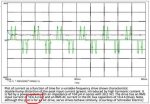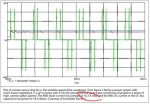I was willing to define the conditions under which I did the test. I would have to write a special program and waste metal to put a full load on the motor. The only purpose of my test on some arbitrary real production machine (at the time this HAAS machine was built I believe their production was about 10,000 CNCs per year) was to look at the input current under 3 phase operation and see if the current was close to a sine wave. The waveform was nothing close to a sine wave.
I am willing to believe that some VFDs being built today have good (high, near unity) power factors. And we probably should be going in that direction, but show me their waveforms.
I agree. And data that I have run on my previously mentioned DC power supply provides some of this information. But since you do not believe that a large filter capacitor is an isolator, then it will be no proof to you. Waveforms and numeric measurements will follow at some time.
.






